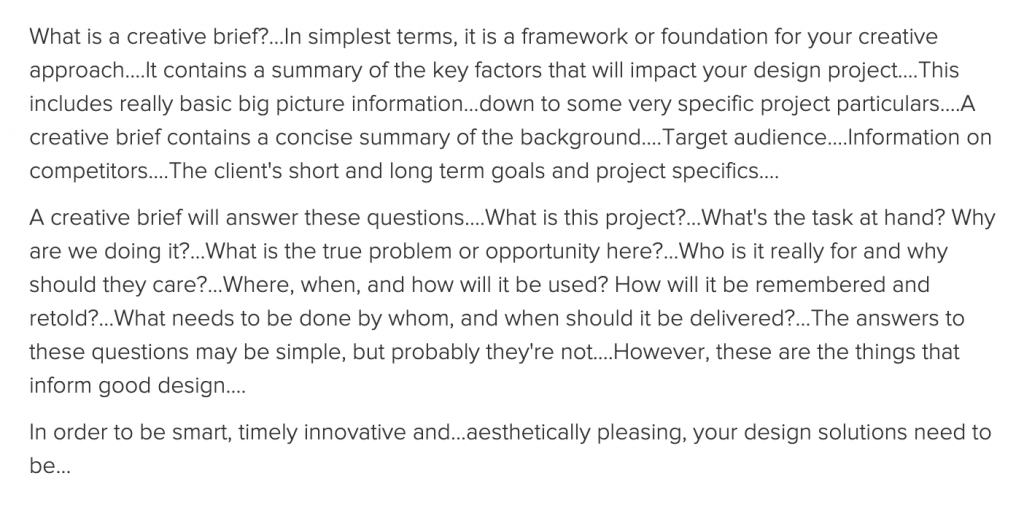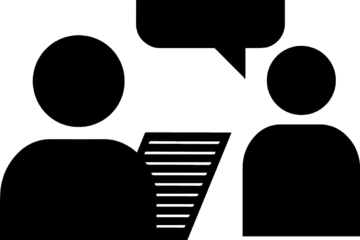Creative Brief
Briefly from Bassett & Partners on Vimeo.
[youtube https://www.youtube.com/watch?v=knEwWepDCsk&w=560&h=315]
What is a creative brief?
In the best cases, a creative brief is a document created through initial meetings, interviews, readings and discussions between a client and designer before any work begins. Throughout the project, the creative brief continues to inform and guide the work. A good creative brief will answer these questions:
- What is this project?
- Who is it for?
- Why are we doing it?
- What needs to be done? By whom? By when?
- Where and how will it be used?
The 10 most important things to include in a creative brief:
- Background Summary: Who is the client? What is the product or service? What are the strengths, weaknesses, opportunities and threats (or SWOTs) involved with this product or service? What existing research, reports and other documents can help you understand the situation?
- Overview: What is the project? What are we designing and why? Why do we need this project? What’s the opportunity?
- Drivers: What is our goal for this project? What are we trying to achieve? What is the purpose of our work? What are our top three objectives?
- Audience: Who are we talking to? What do they think of us? Why should they care?
- Competitors: Who is the competition? What are they telling the audience that we should be telling them? SWOT analysis on them? What differentiates us from them?
- Tone: How should we be communicating? What adjectives describe the feeling or approach?
- Message: What are we saying with this piece exactly? Are the words already developed or do we need to develop them? What do we want audiences to take away?
- Visuals: Are we developing new images or picking up existing ones? If we are creating them, who/what/where are we photographing or illustrating? And why?
- Details and Schedule: Any mandatory information that must be included? List of deliverables? Preconceived ideas? Format parameters? Limitations and restrictions? Timeline, schedule, budget?
- Production Management: Who are we reporting to? Who exactly is approving this work? Who needs to be informed of our progress? By what means?
Bare Minimum Brief
- Overview – summary of problem or goal
- Positioning – audience/competition/voice and tone
- Deliverables
- Process / Timeline
- Budget
21st Century Expert in all things for digital design Lynda.com explains the creative brief below. LINK to LYNDA

Creative Brief –
What…is the challenge we’re facing?
- Background
Objective/Purpose - This is really the “paint the picture” part around what the assignment is. Keep it as brief and as reference oriented as possible.
Who…are we going to be talking to (and/or who are we speaking for)?
- Target audience
- Primary stakeholders
- Who is the audience, and what do they care about?
- Who are the stakeholders on our side, and what’s important to them?
How…are we going to get this done?
- Deliverables
- Distribution
- Budget
- What needs to be created? (Remember, this may change.)
- How will it be rolled out to the audience?
- How much money can we allocate to it?
- When…does everything need to happen?
- Who needs to sign off? Legal?
- When is this being launched/shown?
- What are the “drop-dead” dates?
Use Milanote template




0 Comments